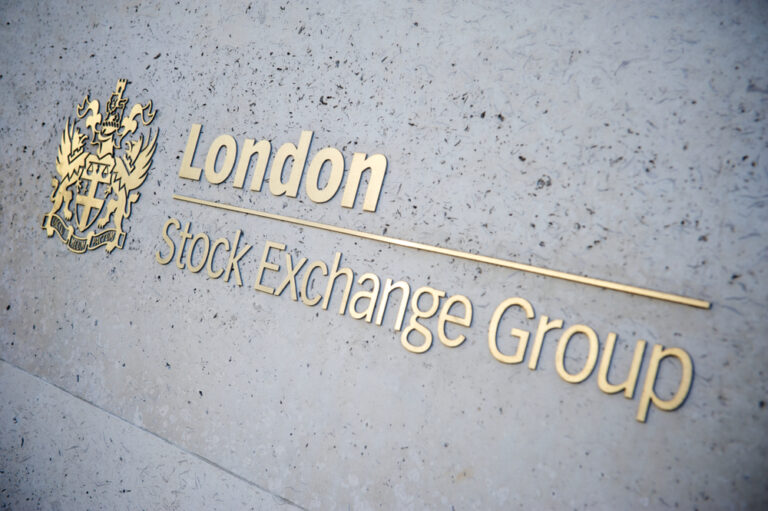Majedie Investments is a compelling proposition in today’s investment landscape, offering a distinctive approach through what its management calls a “liquid endowment” strategy.
This London-listed investment trust has origins stretching back over 100 years and was first listed on the stock exchange in 1985. The trust has undergone a transformation under the stewardship of Marylebone Partners, which became the new manager in March 2023 and has sought to mould the portfolio around ‘eclectic, bottom-up opportunities’.
The investment case for Majedie centres on a thesis that strategies that have proven successful in recent history may not be sufficient to deliver consistent, inflation-beating returns over the long term.
Adapting to the investment environment
According to Majedie’s management, the post-COVID world presents several structural challenges that differentiate it from the previous investment environment. Interest rates are now structurally higher than before, creating a more challenging environment for growth-oriented investments and requiring different return sources.
Market liquidity has become more unpredictable, making it essential to maintain flexibility in investment approaches while avoiding truly illiquid assets. There is less leverage available in the system, meaning investors cannot rely on the same financial engineering that previously drove returns.
The era of consistently rising markets over long periods may be coming to an end, necessitating more active and selective investment strategies. Perhaps most importantly, there is likely to be greater dispersion within markets in the future, resulting in larger performance differentials between winners and losers across asset classes, regions, and industries.
This increased dispersion presents both challenges and opportunities for Majedie as it positions the portfolio in co-investments, thematic funds, and special purpose vehicles.
The Liquid Endowment Philosophy
Majedie’s approach draws inspiration from elite university endowments in the United States, which have historically delivered strong long-term returns.
The “endowment” aspect of their philosophy encompasses several key principles that have served these institutions well over time. The approach emphasises fundamental analysis through deep, research-driven investment decisions based on underlying value rather than market sentiment or technical factors. This runs through the Majedie portfolio.
Management adopts a patient capital approach with a long-term perspective, specifically avoiding market timing strategies that can be detrimental to returns and are difficult to execute effectively.
The strategy actively seeks differentiated and sometimes alternative sources of returns that are not readily available through traditional investment approaches. Importantly, the trusts avoids holding any low-return assets purely for diversification purposes, ensuring that every investment must justify its place in the portfolio based on its return potential.
The “liquid” component distinguishes Majedie from traditional endowments by maintaining the ability to exit positions within reasonable timeframes.
Unlike university endowments that typically invest heavily in private equity, infrastructure, and real estate, Majedie focuses exclusively on liquid investments. Everything in the portfolio can be exited within a reasonable time horizon if necessary, and all investments are priced independently by third parties. This ensures that shareholders can be confident that the net asset value truly reflects the underlying value of the holdings.
Three-Pillar Investment Strategy
Majedie’s portfolio is constructed around three distinct strategies, each serving a specific purpose in the overall investment approach. These strategies work together to create what management describes as very powerful outcomes through the combination of different specialist return sources.
External Managers
The largest component, representing around 60% of the portfolio, focuses on External Managers. This strategy leverages Marylebone Partners’ extensive network built over more than 20 years, which includes some of the world’s best investors in specialist, niche areas of equity and credit markets.
These areas are structurally inefficient, making them particularly suitable for the skills of the specialist managers with whom Majedie has long-standing relationships. These channels are simply not available to most investors.
The network includes experts in areas such as mid-cap biotech, small-cap Japanese equities, activism-focused software investments, European deep value strategies, and various credit strategies, including distressed debt.
Each manager brings a clearly defined role, strategy, and asset class to the portfolio, and when these different specialist return sources are combined, they create a diversified approach that provides returns across various market conditions.
Direct Investments
The second strategy, Direct Investments, accounts for approximately 15% of the portfolio. This focused sub-portfolio contains 10 to 12 carefully selected listed equities chosen by Majedie’s internal team. The selection process emphasises a clear quality bias, focusing on high-quality companies with strong fundamentals. However, the specific stocks chosen are very idiosyncratic and somewhat off the beaten track, meaning investors will not find the obvious household names in the portfolio. This approach allows the team to identify opportunities that may be overlooked by larger, more constrained investment approaches. Names include Weir Group and Computacenter.
Special Investments
The third component, Special Investments, represents arguably the most distinctive element of Majedie’s approach. These are opportunities to invest alongside some of the world’s great investors in their highest conviction ideas. Management typically encounters five to eight such opportunities annually that meet their initial screening, but they turn down five for every one that they actually pursue.
Special investments must meet three strict criteria to be included in the portfolio. First, they must come from a trusted source, with management maintaining a one degree of separation rule where whoever brings an idea must have something to lose as well as something to gain by bringing it forward. Second, management maintains ambitious return targets, requiring that special investments must be capable of making at least 20% annualised returns. Third, the team must feel confident that they can monetise the opportunity within a three-year time horizon or less.
Majedie’s Differentiators
Majedie’s approach offers several key differentiators from traditional investment trusts that make it particularly compelling in the current environment.
Rather than following index-based approaches, Majedie combines different return sources in a way that allows them to diversify risk while keeping upside potential unconstrained. This portfolio construction approach means that the individual building blocks are very differentiated and idiosyncratic, yet each has a fundamental thesis behind it that lends itself well to a portfolio approach.
The portfolio contains investments not found in other funds, providing truly complementary exposure for investors’ broader portfolios. This differentiation means that Majedie should act as a really complementary return source rather than simply duplicating exposures that investors might already have through other holdings. The focus on structurally inefficient markets where skilled managers can add significant value sets the approach apart from more traditional, broadly diversified strategies.
The flexible mandate allows investment across equity and credit markets, geographies, and market capitalisations based on opportunity rather than rigid constraints. This flexibility is particularly valuable in an environment where opportunities may arise in unexpected places and where the ability to adapt quickly can be crucial for generating strong returns.
The Investment Case for Shareholders
Majedie presents several compelling reasons for investors to consider. The most important being the fund’s potential to deliver inflation-beating returns in a world that is becoming increasingly uncertain. Majedie prides itself on identifying bottom-up, compelling, and idiosyncratic investments that can deliver inflation-beating returns across a wide range of market conditions.
This capability becomes increasingly valuable in an environment where traditional approaches may struggle to generate the returns that investors need to preserve and grow their wealth in real terms.
In addition, Majedie offers true diversification through access to investments and strategies not available elsewhere. Not only does management believe it represents a compelling investment proposition, but it also provides complementary exposure that enhances overall portfolio performance while reducing correlation to traditional assets. Investors will not find the investments that feature in Majedie in other portfolios, making it a genuinely differentiated portfolio. You will struggle to find an investment trust portfolio that is anything like the one Majedie has built.
Through its liquid endowment approach, the trust successfully combines the long-term, fundamental mindset that has served successful university endowments well with the flexibility and transparency that liquid markets provide. The three-pillar strategy offers access to specialist managers, direct equity investments, and unique special opportunities that would be difficult for individual investors to access independently.









